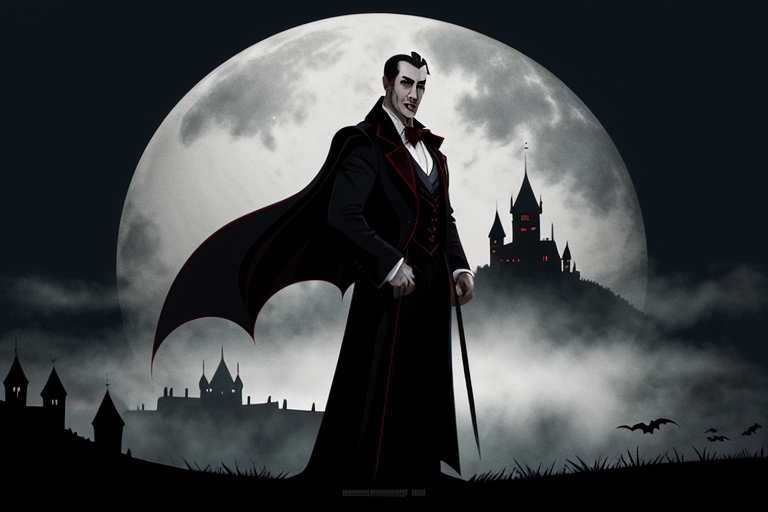Unveiling the Dark Origins of Dracula
In the sprawling landscape of literature and folklore, few figures have managed to capture the imagination as vividly as Dracula—the enigmatic vampire who has haunted our dreams, inspired countless adaptations, and sparked an enduring fascination with the themes of immortality, power, and the supernatural. But behind the seductive allure of the vampire lies a profound tale of transformation, darkness, and moral ambiguity. Delving into Dracula’s origins unveils the complex metamorphosis of a man into a monster, steeped in historical nuance and gothic literature.
Historical Inspirations Behind Count Dracula
The character of Dracula first emerged from Bram Stoker’s seminal 1897 novel, Dracula, a work that fused centuries of European folklore with Stoker’s own creative brilliance. The inspiration for Count Dracula can be traced back to real historical figures, particularly Vlad III, also known as Vlad the Impaler or Vlad Dracula. Born in 1431 in Transylvania, Vlad III was the son of Vlad II Dracul, a member of the Order of the Dragon. This lineage infused Vlad with both a fierce military spirit and an association with the devilish, as “Dracul” translates to “dragon” in Romanian, while “Dracula” means “son of the dragon.”
Vlad III’s image as a ruler is marred by his notorious cruelty. He is best recognized for his gruesome method of impalement and violent retribution against his enemies, which earned him his ghastly nickname. His reign was characterized by a brutal yet iron-fisted approach to asserting power in a tumultuous region plagued by invasions and political strife. It’s this historical tapestry that sets the stage for Dracula’s dark transformation—a narrative enriched by the horrifying realities of his life.
Dracula as a Reflection of Victorian Anxieties
Within Stoker’s narrative, the character of Count Dracula embodies more than just a bloodsucking monster; he is a reflection of fears and anxieties prevalent in Victorian society. Dracula’s arrival in England signals a breach of social norms, echoing contemporary fears about immigration, sexuality, and the upheaval of societal order. The juxtaposition of his aristocratic demeanor with his monstrous nature serves as a metaphor for the devil lurking behind civilized façades.
Symbolically, Dracula’s transformation from man to monster can also be interpreted through the lens of sexual and moral predation. In Stoker’s novel, Dracula is portrayed as a manipulative figure, seducing and preying upon vulnerable women. This casts a shadow of fear over the concepts of femininity and sexuality. Lucy Westenra’s transformation into a vampire exemplifies this loss of innocence and the domination associated with Dracula’s influence, highlighting the era’s anxieties about female sexuality and autonomy.
The Role of Folklore and the Supernatural
Moreover, the journey from man to monster is facilitated by elements of folklore and the supernatural that permeate the narrative. The concept of vampirism itself is steeped in an aura of mystery, emerging from Eastern European folklore where the undead could arise from their graves and return to harm the living. The vampire stands as a paradox: a creature that is both alluring and repulsive, reflecting humanity’s dual nature—the capacity for both goodness and evil. Stoker’s portrayal reinforces the idea that Dracula’s monstrosity is not solely a product of his actions but also deeply rooted in his identity as an outsider—an immortal entity in a world governed by frailty and mortality.
The Gothic Atmosphere and Themes of Duality
The gothic tropes employed by Stoker amplify the themes of duality, isolation, and the sublime horrors lurking beneath the surface of civilized society. From the dark, foreboding castles of Transylvania to the fog-laden streets of Victorian London, Stoker crafts a palpable atmosphere of dread that underscores the peril of embracing one’s darker instincts. The physical transformation of Dracula—emerging from a suave gentleman into a beastly fiend—mirrors the psychological torment faced by those who grapple with their inner demons.
Contemporary Interpretations of Dracula
In contemporary interpretations, such as film, television series, and literature, Dracula continues to evolve, reflecting shifting societal motifs and relatable themes. From the romanticized portrayal of vampires in Twilight to the horror-laden narratives in What We Do in the Shadows, Dracula’s character remains a versatile canvas upon which fears, desires, and archetypes are continuously painted. Nonetheless, the core of Dracula’s narrative—the dark origins of a man who embraced the monster within—serves as a reminder of the fragility of humanity and the thin veil separating civilization from chaos.
Conclusion
In conclusion, the tale of Dracula’s transformation is as fascinating as it is terrifying. It explores profound themes of identity, morality, and the monstrous aspects of being human, while also residing within the broader context of societal fears and folklore. As we uncover the dark origins of Dracula, we are invited to reflect not only on the lore of vampires but also on our understanding of fear, power, and the mysterious allure of the unknown. The legacy of Dracula continues to challenge our perspectives on monstrosity, compelling us to confront the darkness that lingers below our own surfaces, reminding us that within each of us, there lies a thread of the monstrous waiting to emerge.

